
Click the arrows below to view the entire College of Engineering timeline.
1877
The Industrial College was established, including agriculture and the School of Mechanical Arts, a trade school. The first civil engineering classes were taught.
1898
The Mechanical Arts Building was constructed and housed Engineering Mechanics, Civil Engineering and the Math Department.
1907
Agricultural Engineering was established.
1909
The colleges were reorganized by an act of the State Legislature. Industrial College became the College of Engineering and the College of Agriculture.
1911
The college was housed in the Mechanical Engineering Building (now Richards Hall).
1918
The Agricultural Engineering Building was built on East Campus. Now L.W. Chase Hall, the building houses the Biological Systems Engineering department.
1950
Electrical Engineering moved into the newly built Ferguson Hall. The Mechanical Arts Building was remodeled primarily for civil engineering and renamed Stout Hall.
1958
The Chemical Engineering department was added in a wing of Avery Hall. Nebraska Hall was purchased from the Elgin Watch Factory, adding 440,000 square feet. It was not until early 1971 that the engineering college moved into the west half of the building.
1970
UNL's College of Engineering and Omaha's School of Engineering and Technology merged to form the University of Nebraska-Lincoln College of Engineering & Technology. The Lincoln city and east campuses housed nine departments; the Omaha campus housed four departments.
1972
Walter Scott Engineering Center (SEC) was dedicated and housed laboratories, research centers and the engineering shop. Later, the link between SEC and Nebraska Hall was formed and became home to Electrical Engineering and Mechanical Engineering.
1974
Stout Hall was torn down and replaced with Manter Hall Life Sciences Building. Architecture became a separate college on the UNL city campus.
1995
The Peter Kiewit Institute for Information Science, Technology and Engineering was created in Omaha. PKI includes the UNL College of Engineering, the University of Nebraska at Omaha College of Information Science and Technology, and local industry. The state-of-the-art facility opened for classes in 1999.
1998
Architectural Engineering was implemented and housed in Omaha.
2000
The college broke ground on Donald F. Othmer Hall, home to the department of Chemical and Biomolecular Engineering, and the Dean's Office. The four-story building features a biological process development facility, the first of its kind in an American university; and next generation distance education technology. Othmer Hall opened for classes in fall 2002.
2005
To reflect its changing educational mission, the college changed its name to the College of Engineering. Technology was removed in accordance with a national movement to eliminate technology development programs in engineering curricula.
2005
The college discontinued its industrial systems technology major and construction engineering technology program.
2009
The College of Engineering celebrated its 100th anniversary with more than 3,080 undergraduate and graduate students.
2010
Jim O'Hanlon was named interim dean for the college following the departure of David Allen.
2011
The Department of Industrial and Management Systems Engineering was eliminated as part of university budget cuts. Timothy Wei was selected as engineering dean.
2013
The departments of Electrical Engineering and Computer and Electronics Engineering merged into one unit, offering academic programs in Lincoln and Omaha.
2016
Software Engineering was added as an undergraduate major through the Department of Computer Science and Engineering.
2016
Lance C. Pérez was named interim dean of the college for a three-year appointment.
2017
The college had another record-breaking enrollment, with 3,772 undergraduate and graduate students (Fall 2017). After hiring 65 new faculty since 2014, the college boasts nearly 230 faculty, serving programs on the City Campus and East Campus in Lincoln and the Scott Campus in Omaha.
2018
In May, Lance C. Pérez was named Dean of the College of Engineering.
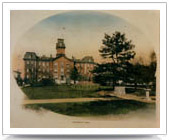
In the Beginning
The University of Nebraska first offered civil engineering courses in 1877 within the Industrial College in Lincoln. In 1898 the Mechanical Arts Building (later Stout Hall) was built to house Engineering Mechanics, Civil Engineering and the Math Department. In 1909, state legislation reorganized the old Industrial College into two offshoots:
- The College of Engineering
- The College of Agriculture
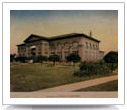
The engineering college then had 400 students and, by 1911, its first real home in Mechanical Arts Hall. In 1918 at East Campus, the Agricultural Engineering Building was built. Renamed L. W. Chase Hall after the first head of Ag Engineering, the building now houses the Department of Biological Systems Engineering, which includes Agricultural Engineering.
Around 1950, Electrical Engineering moved into the newly built Ferguson Hall. Mechanical Arts Hall was renamed Stout Hall, named for Oscar Van Pelt Stout, who led the college during World War I. This facility contained laboratories, classrooms, offices and an engineering library, and was used until 1974.
A chemical engineering wing was added to Avery Hall and in 1958, Chemical Engineering became a department.

Enrollment grew and technologies advanced, necessitating more (and updated) engineering facilities. The purchase of Nebraska Hall in 1958 from the Elgin Watch Factory gave the university an additional 440,000 square feet; however, it was not until early 1971 that engineering moved into the west half of the building. Nebraska Hall currently houses the following departments:
- The Durham School: Construction Engineering and Construction Management
- Mechanical & Materials Engineering
- Engineering Library (including Engineering Student Services)
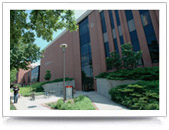
Scott Engineering Center (SEC), dedicated in 1972, holds laboratories, research centers and engineering shops. Later, a link was added between SEC and Nebraska Hall. This houses research labs, offices and classrooms.
The Link connects Scott Engineering Center and Nebraska Hall and features the following departments. The Link is scheduled for demolition in summer 2019 as part of a three-phase building and renovations project for the College of Engineering.
- Civil Engineering
- Electrical and Computer Engineering
Computer Science and Engineering resides in Avery Hall; in 2008, additional computing, classroom and office spaces opened in the Schorr Center, a specially renovated facility located in Nebraska's famous Memorial Stadium.
The College of Engineering encompassed architecture until that program became a separate college in 1974. In the early 1970s, the University of Nebraska became a system of universities including UNL and a municipal university in Omaha. A merger with Omaha's College of Engineering and Technology formed the University of Nebraska-Lincoln College of Engineering.
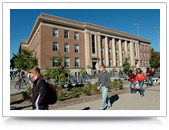
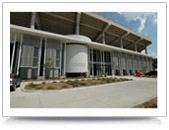
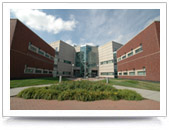
In 1995, The Peter Kiewit Institute took shape in Omaha to better meet the changing needs of students and local industry. The Institute houses the UNL College of Engineering and the University of Nebraska Omaha College of Information Science and Technology. PKI opened in 1999 with each college occupying a wing; the Institute is located at 67th and Pacific streets on UNO's Scott Campus. Engineering programs there include:
- The Durham School: Architectural Engineering, Construction Engineering, Construction Management
- Civil Engineering
- Computer Engineering
- Electrical Engineering
- Pre-engineering
In 2003, Donald F. Othmer Hall, adjacent to Scott Engineering Center, became home to the Department of Chemical and Biomolecular Engineering and the Dean's Office suite.
- Chemical and Biomolecular Engineering
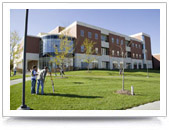
The $24 million building features the latest in research laboratory design, including a bio-process manufacturing facility, the first of its kind in any American university; a state-of-the-art computer control system for laboratories; and next-generation distance education technology. Funding came from the estate of Mildred Topp Othmer, a 1928 UNL graduate who was the widow of Donald F. Othmer, noted chemical engineer and professor at the Polytechnic Institute of New York in Brooklyn. Donald Othmer earned his bachelor's degree in chemical engineering at UNL in 1924 and later accumulated 150 patents in a variety of fields. In 1947, he and Raymond Kirk, a Polytechnic colleague, published the Kirk-Othmer Encyclopedia of Chemical Technology.
-------------------
Construction beginning in 2019: The College of Engineering is beginning the process of transformational facilities renovations and new construction.
- Phase I features the $75 million renovation of two primary buildings within the engineering complex on City Campus in Lincoln: Scott Engineering Center (SEC) and the Link, which connects SEC and Nebraska Hall. The Link will be demolished and a new building constructed in its place to house research labs. SEC will undergo a major renovation for upgraded labs, classrooms and graduate student spaces.
- Phase II is a new $85 million building in the vicinity of 17th and Vine (across from the engineering complex), geared toward providing a transformational undergraduate experience
- Phase III (still to be determined) will encompass renovations and upgrades to the facilities in the Peter Kiewit Institute in Omaha.